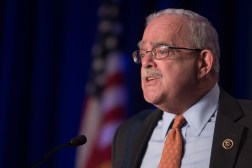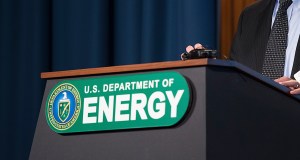U.S. CIO: Think beyond the org chart

U.S. CIO Tony Scott made a plea Tuesday to agency officials to build systems that reach across organizational boundaries and keep the customer in mind.
“I want you to… look at the information systems architecture of your organization, what its boundaries are, the scope of the infrastructure and the applications,” Scott said at FedScoop’s 2016 FedTalks. “If it exactly matches the org chart of your agency, you know you’re in trouble.”
Scott says this “organizational paradigm” is a tell-tale sign of legacy government systems — and that’s why he wants legislation to push agencies to modernize their systems.
He noted that shifting this paradigm and modernizing legacy systems is particularly important for cybersecurity, something he has mentioned in past talks.
[Read more: Tony Scott: Time to change the ‘bubble wrap’ paradigm]
“Ninety-five percent of what we do exactly mirrors the org chart of the federal government. In a digital world that doesn’t make sense any more,” Scott said in September at the Billington Cybersecurity Summit in Washington, D.C. “We were expecting the Marine Mammal Commission to do the same kind of job the [Defense Department] does for protecting its systems and networks.”
The Modernizing Government Technology Act, which passed the House of Representatives in September, would create IT working capital funds in each agency and a centralized fund that agencies who most need it could draw from.
[Read more: IT Modernization bill passes house unanimously]
Scott said that idea to create a centralized modernization fund has “actually gotten better” as it has evolved through the legislative process from the first bill on the subject, which would have created a $3.1 billion centralized modernization fund.
“This IT Modernization Fund, or now MGT, is a better way of doing things,” Scott said. “What it allows is for agencies to come together and say, ‘here’s some common things that we can do, or we’d like to do, or we should do together,’ and build common infrastructure, and shared services upon which applications and citizen-serving capabilities can be built.”
Scott noted the bill doesn’t actually include money for the funds, but he said “that comes a little bit later.”
“But the construct and the framework of it is something that I think is quite workable,” he said.
Scott encouraged the audience to talk to senators about the bill and noted that “everyone understands what we’ve been doing hasn’t worked so well, and we need a new model or a new paradigm for this.”
An information system architecture that has a structure reflecting the organization shows an official has “not taken a customer-centric approach,” Scott said.
“You shouldn’t have to know how an enterprise is organized in order to find information or to get served or to do whatever it is you’re trying to do,” he said.
Scott added: “Let’s move on to a customer-centric model that leverages broad cloud infrastructure, broad cloud shared services, and then let’s focus the precious resources that we have in individual agencies on doing the mission-specific, mission-critical things that only those agencies can do.”






